Building a microgrid in Ueno Village, Gunma Prefecture, to Achieve Decarbonization and “Zero” Power Outages During a Disaster.
- Takehisa Ishiwata
- Yusuke Kumakura
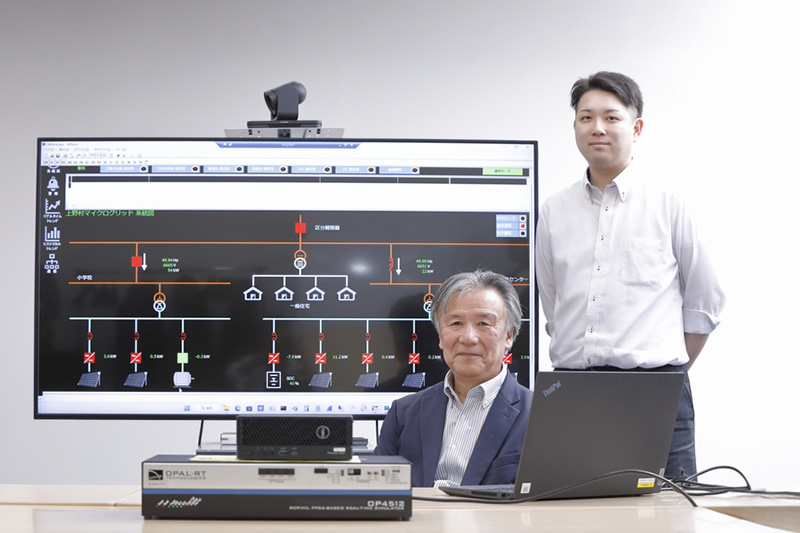
The Sixth Strategic Energy Plan, a national policy, states that renewable energy is a main power source, and there is a need to expand the introduction of local power sources, including renewable energy. In recent years, the number of natural disasters in Japan has been on the increase, and a business continuity plan (BCP) is being emphasized for setting forth the methods and measures in advance to minimize the impact of an emergency and to ensure business continuity and a rapid recovery.
In response, Ueno Village in Gunma Prefecture announced the Ueno Five Zero Declarations, which set the targets of zero greenhouse gas emissions through the maximum use of renewable energy and zero power outages in the event of a disaster through the construction of a microgrid energy network. To this end, Ueno Village joined a project, which is being carried out with the support of a subsidy from the Ministry of Economy, Trade and Industry, together with TEPCO Power Grid, Inc., and Takaoka Toko Co., Ltd. Our company developed a BCP-compliant energy management system (EMS) (hereinafter referred to as “this system”) that was installed in Ueno Elementary School in the village in March 2023.
Technology
EMS for Decarbonization and BCP
A microgrid system avoids power outages by continuously supplying self-sufficient power within an area in an emergency rather than relying on the power supplied by a power company. In this project, the existing distribution lines connecting the elementary school and an adjacent school lunch center are being used to build the microgrid.
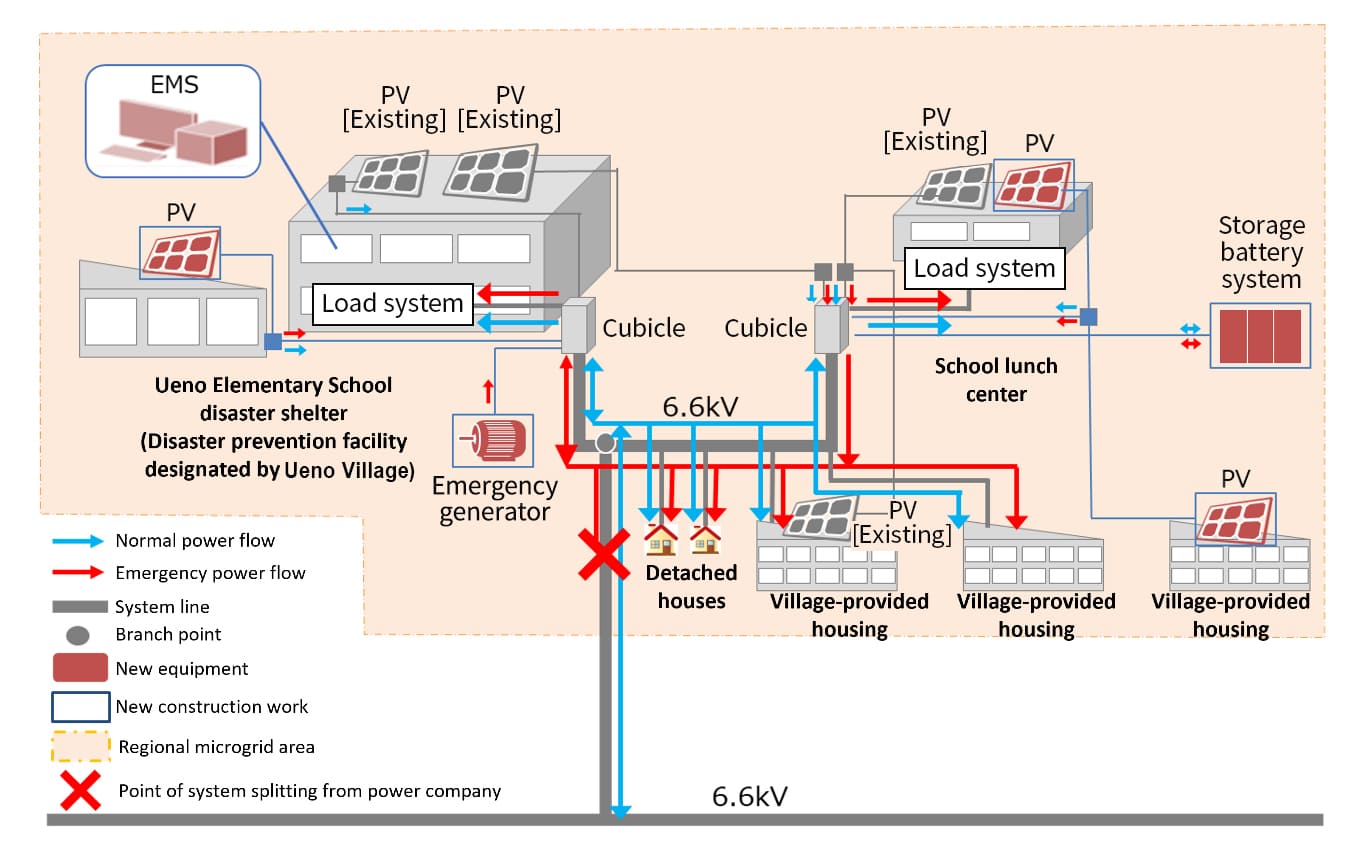
System Configuration
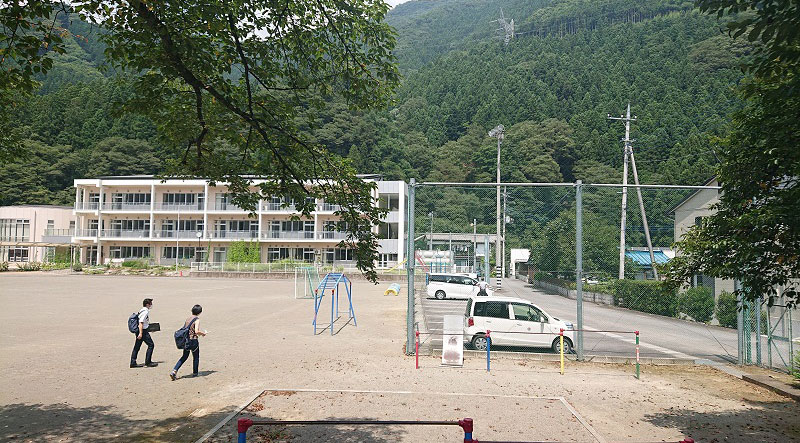
Ueno Village, Gunma Prefecture (around Ueno Elementary School)
In the course of this project, a photovoltaic system (hereinafter referred to as “PV”) and an emergency generator were installed at the elementary school, and a PV and storage battery system (hereinafter referred to as the “storage battery”) for electricity storage were installed at the school lunch center as the power source configuration for the microgrid. This system has two modes: normal and emergency. This system controls the PV and storage battery at each facility.
Under normal conditions, renewable energy is utilized to the maximum extent possible by appropriately controlling the PV output and the charging and discharging power of the storage battery, which were installed at each facility. In an emergency (i.e., a situation where power cannot be supplied by the power company because of a disaster), a microgrid is built first including the elementary school and the school lunch center.
Next, the emergency generator is activated and the PVs and the storage battery then sequentially connects to the microgrid in parallel. Following that, this system supplies power while controlling the PVs and the storage battery.
Profile
-
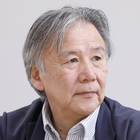 Takehisa IshiwataGX Solution Business Division
Takehisa IshiwataGX Solution Business Division
System Solution Design Department
and System Solution Business Office -
 Yusuke KumakuraGX Solution Business Division
Yusuke KumakuraGX Solution Business Division
System Solution Business Office
Energy Consulting Group
※At the time of development, both of them belonged to GX Solution Business Division, Future Grid Design Office.
Building a microgrid to supply self-sufficient power during a power outage
KumakuraIn 2022, Ueno Village in Gunma Prefecture was selected as a decarbonization pioneer region by the Ministry of the Environment. Decarbonization pioneer regions are areas that implement pioneering decarbonization initiatives in line with regional characteristics for achieving carbon neutrality by 2050. We constructed a BCP-compliant EMS to support the decarbonization efforts by Ueno Village.
IshiwataUeno Village is located in a mountainous area where 95% of the village’s total area is covered by forest. The single road to the power substation is included in the earth-flow disaster warning areas. There have been cases of power outages from typhoon damage in the past, so it has been important to independently secure self-sufficient power.
Previously, power companies were responsible for the operation and maintenance of the entire power distribution system, but one of the conditions for being selected as a decarbonization pioneer region by the Ministry of the Environment is that the business operator build and operate a microgrid, and we were able to collaborate by utilizing our technology.
KumakuraThe Future Grid Design Office, which we assigned to, is the department that develops the control systems necessary for smart grids, which are power grids using IT to optimize power supply and demand. I was responsible for programming this system under the supervision of Mr. Ishiwata, the manager at the time.
This system helps to stabilize the power supply within the microgrid using renewable energy by issuing output commands to the PVs and storage batteries to correct any frequency fluctuations within the microgrid. Under normal conditions, it is possible to calculate and control the command values for how much of the PV-generated power (kW) should be supplied to the distribution system and how much power (kW) the storage batteries should charge and discharge. The system can also be operated remotely with a dedicated app.

IshiwataIn the event of a power outage, the emergency generator start operating first, then secure power for control devices such as the EMS, and begin parallel power supply from the PV and storage batteries.
Ueno Village, which is aiming for decarbonization through the use of renewable energy, seemed to have some resistance to introducing a diesel generator (an emergency generator). For that reason, we experienced some difficulty deepening the understanding of the local governments and parties concerned regarding the inertial force of the power system (hereinafter referred to as the “inertial force”), which is essential for renewable energy to serve as the main power source.
Technically speaking, the inertial force refers to the ability to maintain the frequency of a fluctuating power system. Without the inertial force, the PVs and storage batteries cannot function, so it is necessary to use an emergency generator to create the inertial force.
The output of the PV fluctuates depending on the angle and shade of the sun, which changes the voltages and frequencies. Normally, a microgrid can continue to supply power while in operation within a specified range of voltages and frequencies; however, without the inertial force, PV output fluctuations can easily cause the frequencies to deviate from the specified range, resulting in a power supply outage. In order to secure the inertial force, Ueno Village adopted an emergency generator. Meanwhile, a storage battery equipped with an inverter to generate the inertial force through calculations is also being developed, and it may be possible to build a microgrid using just a storage battery in the future.
Development of an EMS that can make use of existing PVs
IshiwataUeno Village already had the PVs of other companies, so we built a system that made use of the equipment. There was a problem with some of the existing equipment in that the PVs did not accept external signals, which meant the EMS or other systems could not control the output. In addition, there were variations in the performance of the existing control equipment, so we had to be creative in developing this system.
KumakuraEven for the PVs that did not accept external signals, we could collect data on the amount of power they produced. So, while monitoring that amount, we tried to optimize the entire system by controlling the output from the PV that could accept external signals. We then did several simulations of the microgrid that included all the PVs and adjusted the parameters for controlling the PVs and the storage battery to operate without any problems. However, when we connected this system to the local equipment, the results differed from those of the simulations, so we had to work hard to readjust the parameters. Staying in the area for about a week for the repeated adjustments was a valuable experience.
IshiwataWe had already developed EMSs for the microgrids of different projects. We combined the systems from multiple projects and applied them to the system for Ueno Village; however, it took about a year before it was put into operation exclusively for Ueno Village.
KumakuraThis system has two modes: normal and emergency. As Mr. Ishiwata said, the systems applied to the two modes were those built for different projects. I was responsible for the normal mode. Originally, we had selected a development method suited for the characteristics of each project, so I remember very clearly the work we did to unify the programming languages and control signal use for each mode by collaborating with the personnel in charge of the emergency mode.
IshiwataAt the moment, there have been no power outages, and this system has been operated in normal mode only. By using the PV output within the elementary school and the school lunch center, we believe that it is possible to reduce CO2 emissions by around 30%.

Contributing to the world's decarbonization through EMSs for microgrids
IshiwataWe think that microgrids will become much more important and necessary in the future in line with the promotion of decarbonization. With an EMS, it is possible to build a microgrid not only with a PV but also with wind power generators, so it can be introduced even in snow-covered regions. We have already received requests from communities on islands and in mountainous areas that want to aim for zero carbon emissions using renewable energy. We will keep working to develop this system and aim for further dissemination in order to achieve zero carbon emissions by 2050.
KumakuraThrough this project, I realized the importance of adjusting the settings while checking the actual equipment on-site, rather than just doing simulations, in order to work the equipment properly. I feel a sense of fulfillment in contributing to decarbonization through the EMS that I developed. Microgrids with renewable energy is expected to expand in the future, so we would like to make use of our experience in Ueno Village to roll out this type of system to other regions in Japan and overseas.

Latest articles
-
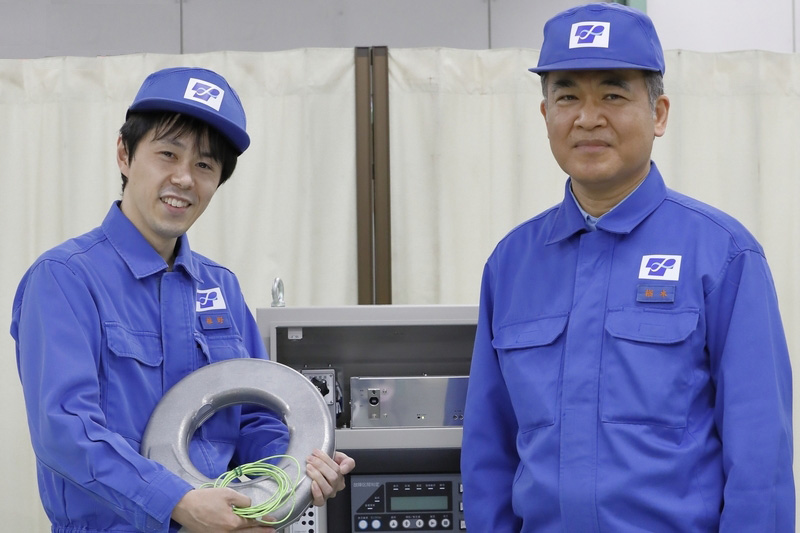 interviewDevelopment of a fault section detection system that enables rapid power restorationElectricity is essential in our lives. A number of substations through which electricity is provided from a power station to houses have a key role in the stable delivery of power.
interviewDevelopment of a fault section detection system that enables rapid power restorationElectricity is essential in our lives. A number of substations through which electricity is provided from a power station to houses have a key role in the stable delivery of power. -
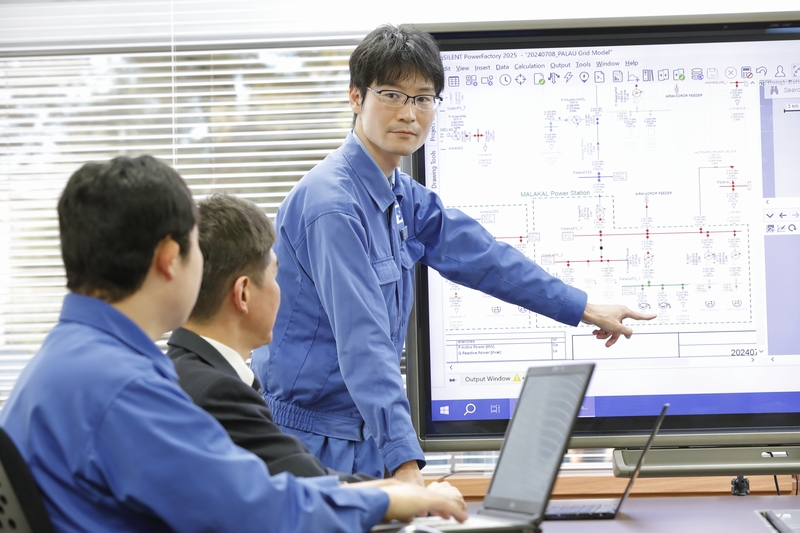 interviewPowerFactory—analytic technology underpinning the stable supply of electric powerIn Japan, the retail business of electric power became fully liberalized in 2016. Retail operators not only sell electricity but must also balance demand and supply as they relate to the electric power system (electric power grid from the power plant to the delivery of electricity to customers) to enable customers to reliably use electricity. In addition, renewable energy continues to be introduced through efforts to become carbon neutral by 2050, which is making it more difficult to maintain a balance between demand and supply. Thus, the need to engage in visualization to ascertain the flow of electricity through an electric power system is growing. Consequently, analytic software for electric power systems will play a role.
interviewPowerFactory—analytic technology underpinning the stable supply of electric powerIn Japan, the retail business of electric power became fully liberalized in 2016. Retail operators not only sell electricity but must also balance demand and supply as they relate to the electric power system (electric power grid from the power plant to the delivery of electricity to customers) to enable customers to reliably use electricity. In addition, renewable energy continues to be introduced through efforts to become carbon neutral by 2050, which is making it more difficult to maintain a balance between demand and supply. Thus, the need to engage in visualization to ascertain the flow of electricity through an electric power system is growing. Consequently, analytic software for electric power systems will play a role. -
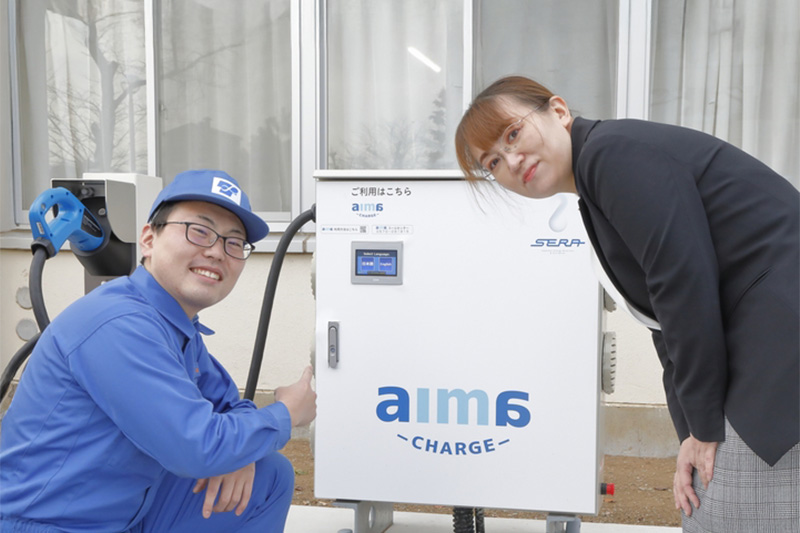 interviewEV charging in the interval between errands. aima CHARGEWith the aim of carbon neutrality, Japan set the goal to achieve 100 percent electrified vehicles in new passenger car sales by 2035. The proliferation and expansion of the EV charging infrastructure is essential for the proliferation of electric vehicles (hereinafter referred to as “EV”), and the Ministry of Economy, Trade and Industry set the goal of building 300,000 EV charging equipment by 2030.
interviewEV charging in the interval between errands. aima CHARGEWith the aim of carbon neutrality, Japan set the goal to achieve 100 percent electrified vehicles in new passenger car sales by 2035. The proliferation and expansion of the EV charging infrastructure is essential for the proliferation of electric vehicles (hereinafter referred to as “EV”), and the Ministry of Economy, Trade and Industry set the goal of building 300,000 EV charging equipment by 2030. -
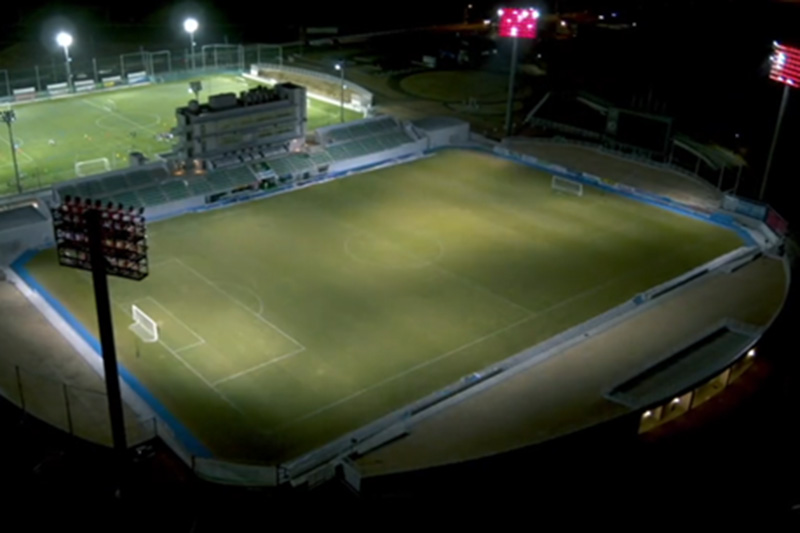 interviewProposal for new value via the first steel-tower-type full-color rendering illumination in JapanSince July in 2021, Prifoods Stadium in Hachinohe City, Aomori Prefecture has operated LED illumination equipment capable of the first steel-tower-type full-color light rendering in Japan. Takaoka Toko/Kyoya Denki/CADEC specific construction work consortium accepted an order for this equipment from Hachinohe City, and it was completed after nine months of work.
interviewProposal for new value via the first steel-tower-type full-color rendering illumination in JapanSince July in 2021, Prifoods Stadium in Hachinohe City, Aomori Prefecture has operated LED illumination equipment capable of the first steel-tower-type full-color light rendering in Japan. Takaoka Toko/Kyoya Denki/CADEC specific construction work consortium accepted an order for this equipment from Hachinohe City, and it was completed after nine months of work.
